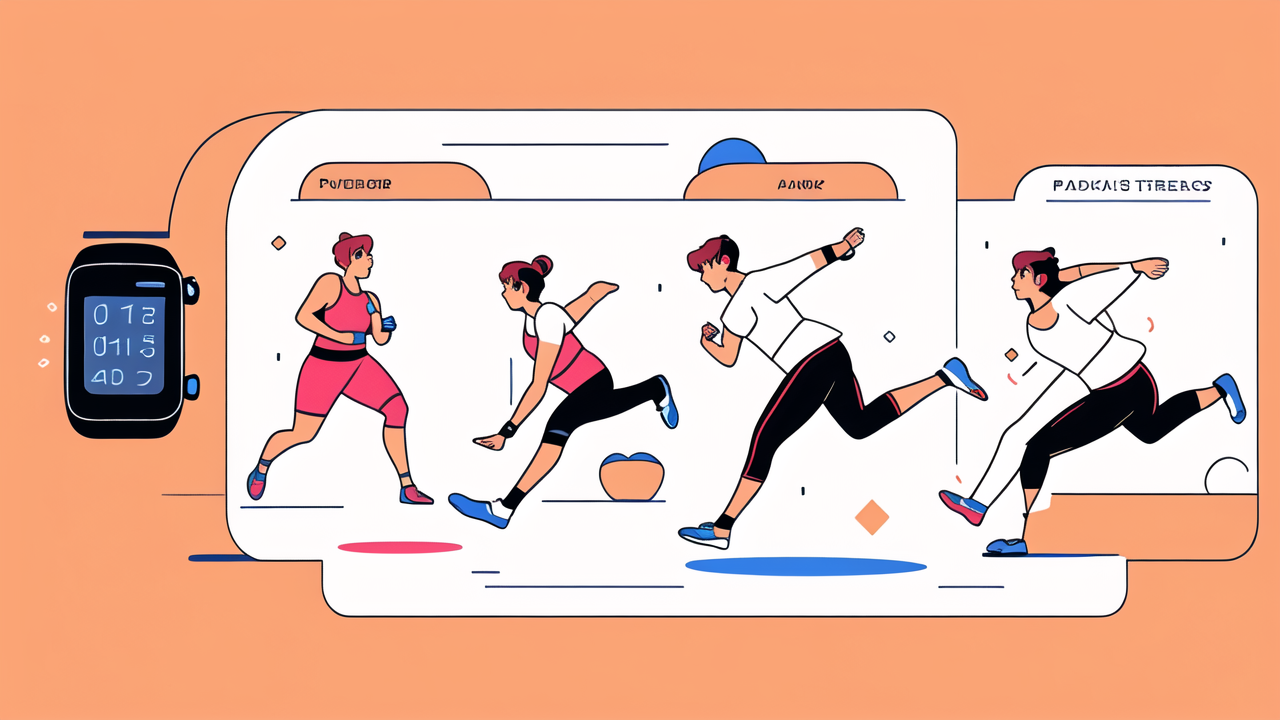Understanding the Role of Wearable Technology in Today's Society
The Evolution of Wearable Technology in the United States
Wearable tech has come a long way in the US. It started with simple pedometers and heart rate monitors. Now, we have smartwatches, fitness trackers, and even smart clothing. These devices have become more advanced and user-friendly over time. They can now track various health metrics, send notifications, and even make payments. The rise of smartphones has played a big role in this evolution. Many wearables now sync with our phones, making them more useful. Companies like Apple, Fitbit, and Garmin have led the way in this field. They've made wearables a part of our daily lives.

Key Benefits of Wearable Devices for Consumers
Wearable devices offer many benefits to users. They help track fitness goals and monitor health stats. This can motivate people to be more active and health-conscious. Wearables can also improve productivity by providing quick access to information. They allow users to stay connected without constantly checking their phones. Some devices can even detect health issues early, potentially saving lives. Wearables can also enhance personal safety with features like emergency SOS. For many, these devices have become essential tools for managing daily life and health.
The Impact of Wearables on Fitness and Wellness Trends
Wearables have revolutionized the fitness and wellness industry. They've made it easier for people to track their workouts and progress. Many users now rely on these devices to set and achieve fitness goals. Wearables have also popularized the concept of step counting and daily activity targets. This has encouraged more people to be active throughout the day. The data from these devices has led to new fitness trends and challenges. It's also changed how people approach their overall wellness. Wearables have made health monitoring more accessible and engaging for the average person.
How to Choose the Right Wearable Device for Your Lifestyle
Assessing Your Personal Needs and Preferences
Choosing the right wearable starts with understanding your needs. Think about what you want to track or achieve. Are you focused on fitness, or do you need more general features? Consider your daily routine and activities. Do you need a waterproof device for swimming? Or a rugged one for outdoor adventures? Think about the battery life you need. Some people prefer devices that last weeks, others don't mind daily charging. Also, consider the design. Do you want something that looks like a traditional watch? Or a sleek, modern device? Your comfort with technology is also important. Some wearables are more user-friendly than others.

Comparing Top Wearable Technology Brands and Models
When comparing wearables, look at the top brands in the market. Apple, Fitbit, Garmin, and Samsung are some leading names. Each brand has its strengths. Apple excels in smartwatch features and iPhone integration. Fitbit is known for its fitness tracking and user-friendly apps. Garmin offers advanced sports tracking and long battery life. Samsung provides a good balance of features for Android users. Compare the specific models within each brand. Look at their features, battery life, and price points. Read user reviews to get real-world insights. Consider the ecosystem each device works with. Some work better with certain smartphones or apps.
Considering Compatibility with Other Technologies and Platforms
Compatibility is crucial when choosing a wearable. Make sure it works well with your smartphone's operating system. Check if it syncs with the apps you already use. For example, if you use a specific fitness app, ensure the wearable can sync data to it. Consider how the device fits into your smart home setup, if you have one. Some wearables can control smart home devices or integrate with voice assistants. Think about your future tech plans too. Will the wearable still be useful if you change phones? Look for devices with broad compatibility or those that use open standards. This ensures your wearable remains useful in the long run.
Best Practices for Maximizing Wearable Technology Benefits
Wearable Technology Care and Maintenance
Proper care extends the life of your wearable device. Clean it regularly with a soft, lint-free cloth. For water-resistant devices, rinse with fresh water after exposure to salt water or chemicals. Avoid extreme temperatures and direct sunlight when not in use. Keep the charging ports clean and dry. Use the correct charger to prevent damage. Update the device's software regularly for best performance. Be gentle with the screen and buttons. If your device has replaceable bands, clean them separately. For fitness trackers, take them off occasionally to let your skin breathe. Follow the manufacturer's guidelines for battery care to maintain its lifespan.

Tips for Effective Integration of Wearables into Your Daily Routine
To get the most from your wearable, make it a seamless part of your day. Start by wearing it consistently. Set realistic goals and use the device to track your progress. Customize notifications to avoid overwhelm. Use reminders for movement breaks or hydration. Sync your wearable with your calendar for better time management. Explore all features to find what's most useful for you. Use sleep tracking to improve your rest habits. Share your activity with friends for motivation. Make charging your device part of your nightly routine. Regularly review your data to spot trends and areas for improvement. Use insights from your wearable to make informed lifestyle choices.
Navigating the Challenges: Privacy, Security, and Social Implications
While wearables offer many benefits, they also raise concerns. Privacy is a key issue. Be aware of what data your device collects and where it's stored. Use strong passwords and two-factor authentication when available. Regularly review app permissions. Be cautious about sharing location data. Understand the company's data policies before using a device. For security, keep your device's software updated. Be wary of connecting to unsecured Wi-Fi networks. Consider the social impact of always-on devices. Set boundaries for when and where you use your wearable. Be mindful of others' privacy when using features like cameras. Balance the benefits of data tracking with the need for digital detox.




Leave a comment
This site is protected by hCaptcha and the hCaptcha Privacy Policy and Terms of Service apply.